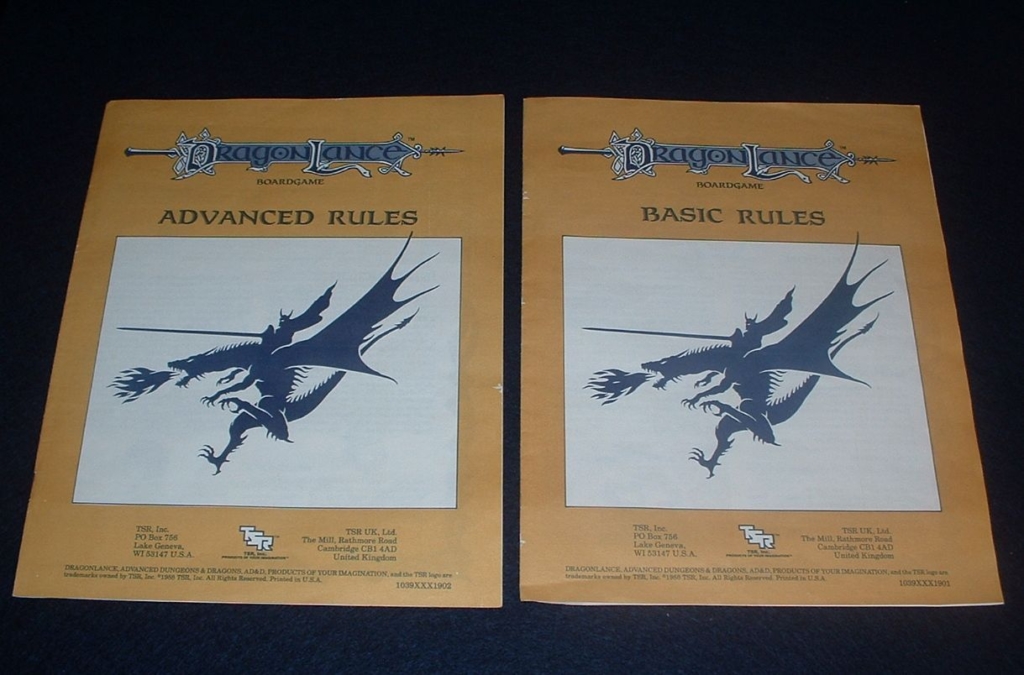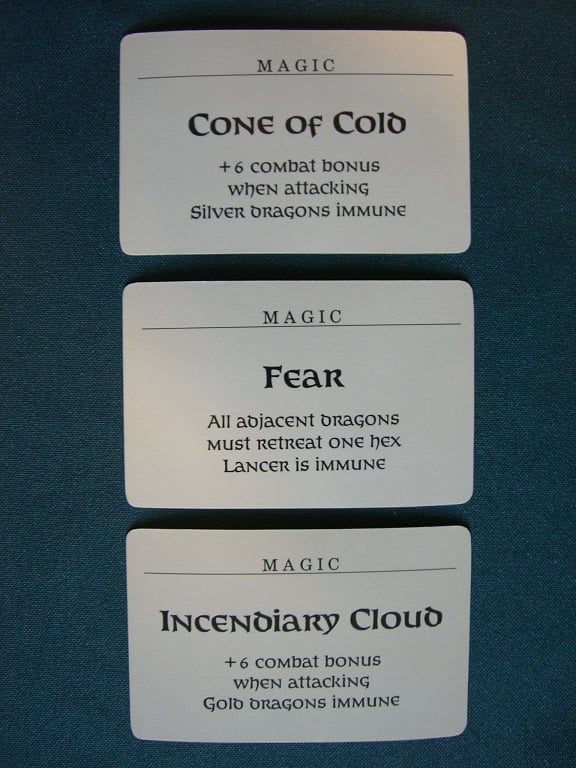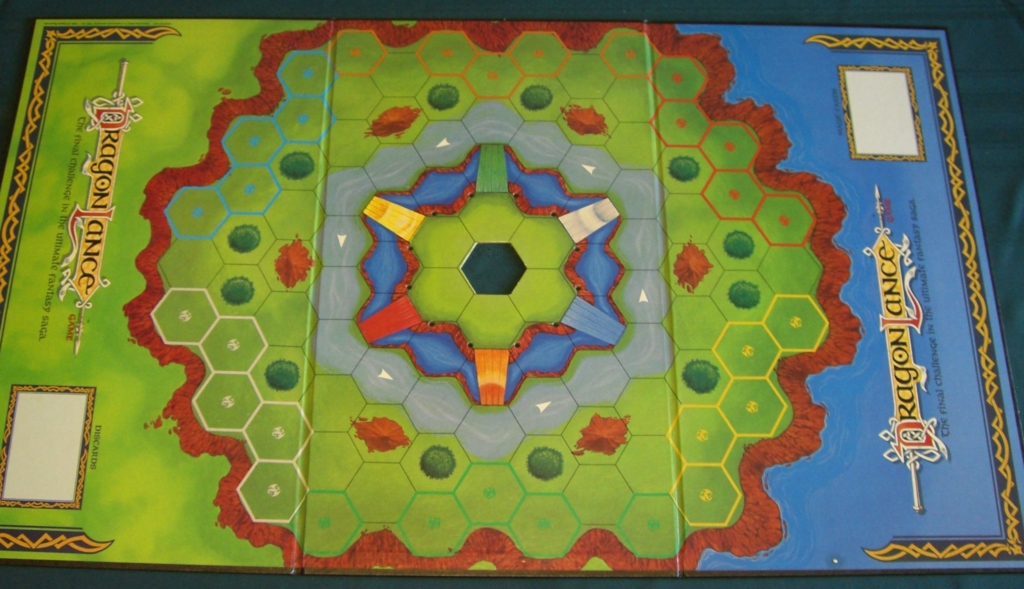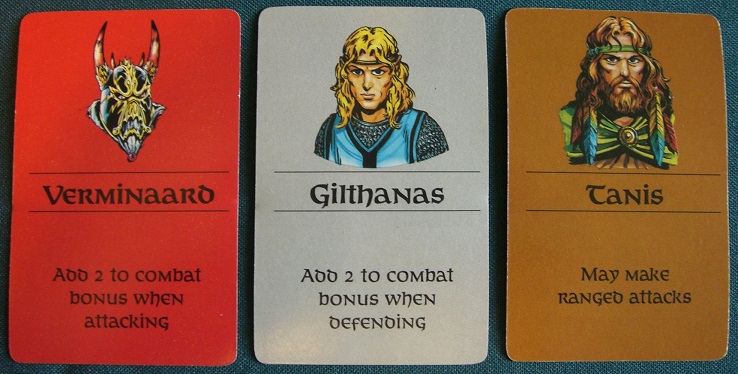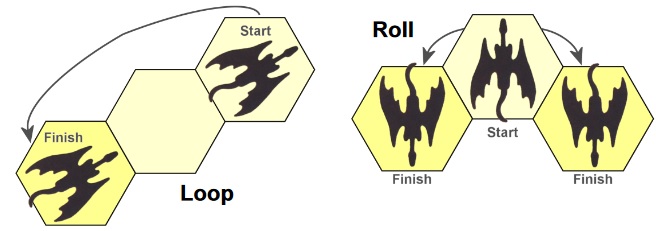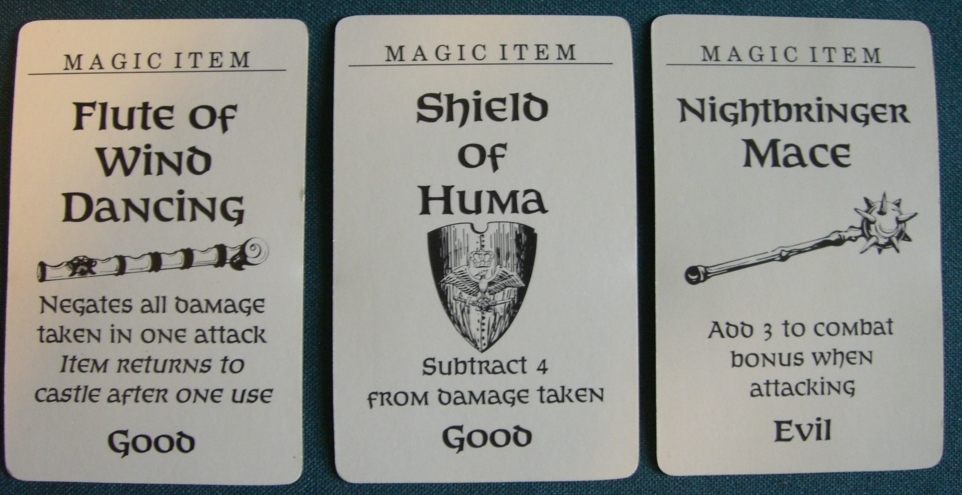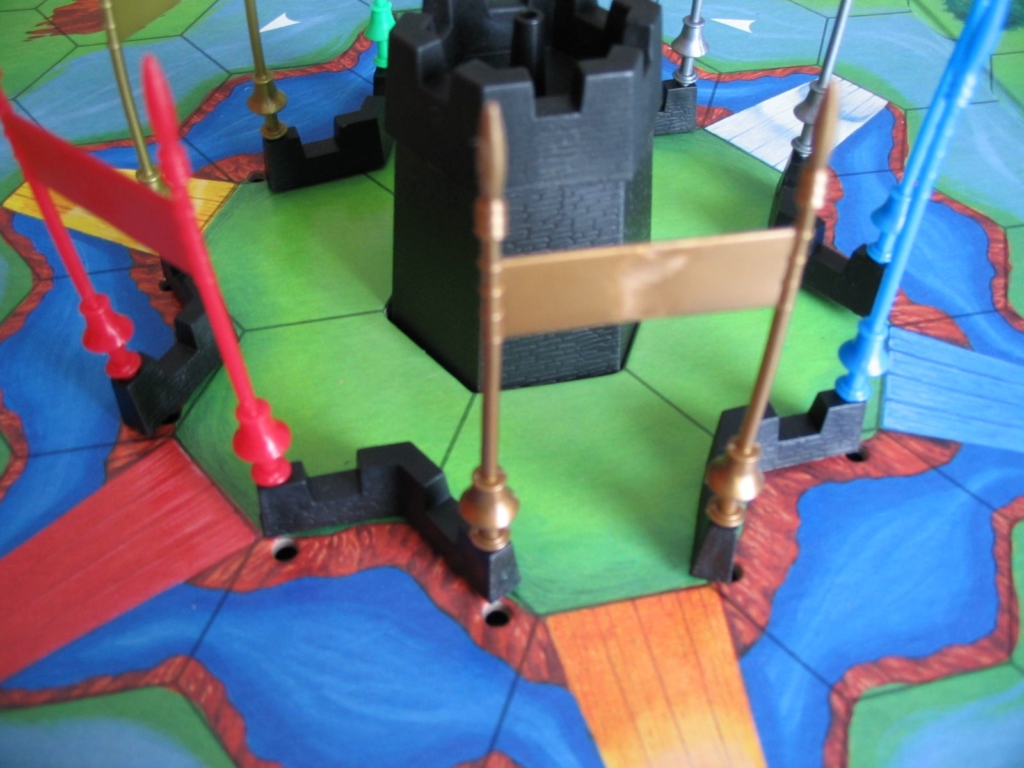The ‘Dragonlance’ Board Game: What If ‘Star Wars: X-Wing’ Had Dragons?
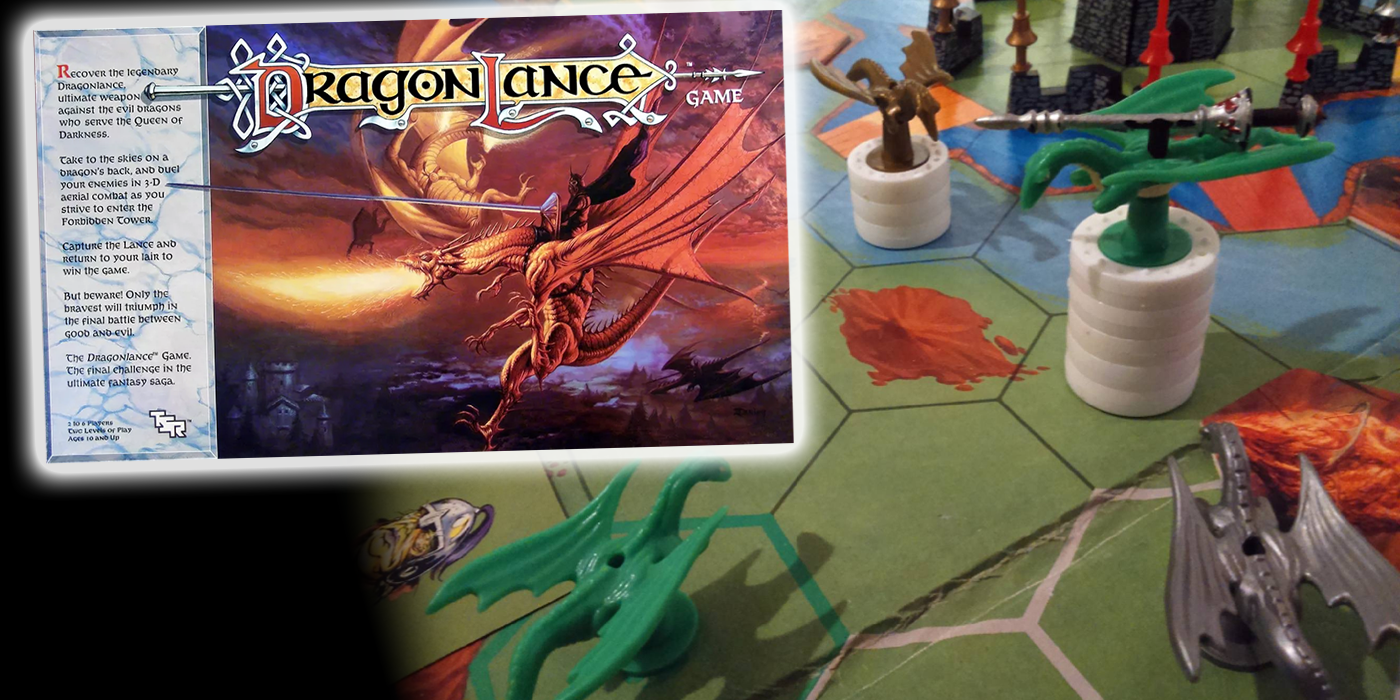

What do you get when you mix a card-based wargame, with a 3D flight simulator, and a sprinkle of dragons? You get the Dragonlance board game!
It’s not often I look at a game and think, that game looks fun as heck! But boy, would I be bad at it! But that perfectly describes the 1988 release Dragonlance, by TSR, before they went off the deep end.
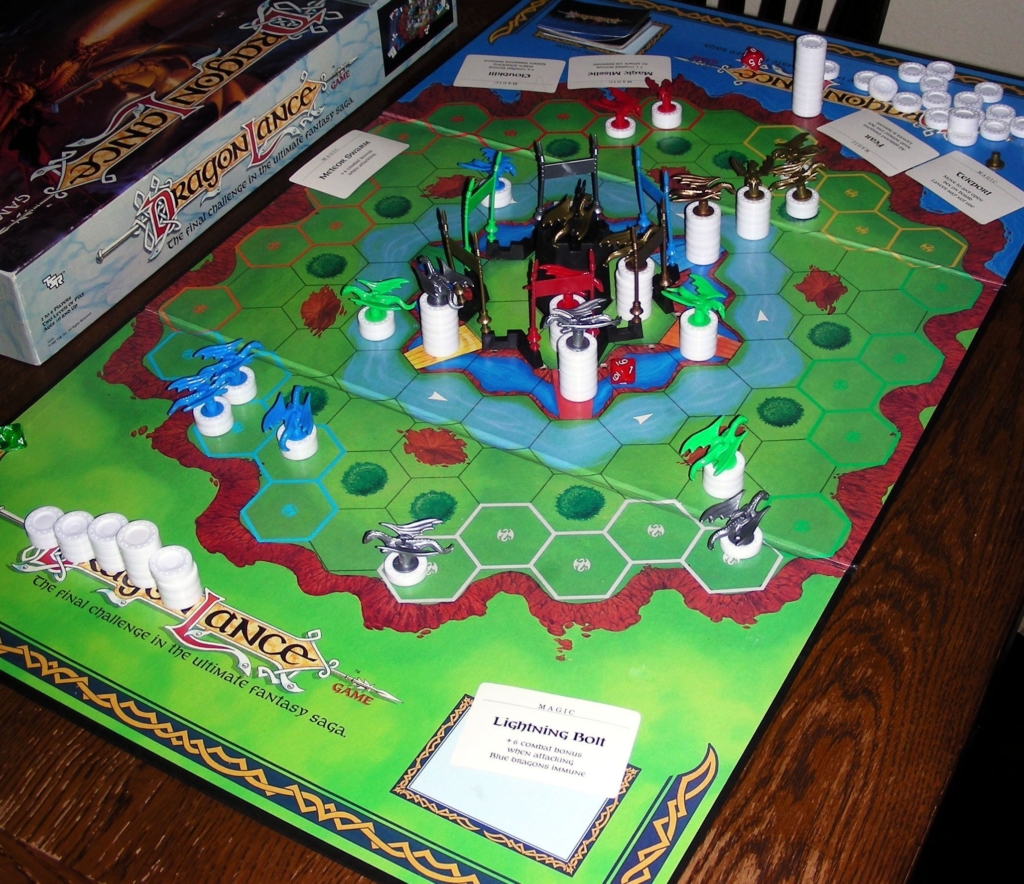
Dragonlance Board Game Overview
The Dragonlance board game combines a lot of elements from lots of different genres. In general, though, it’s a competitive roll-to-move, pick-up-and-deliver game. The objective of each player is to retrieve the titular Dragonlance from the center of the board and return it to their own base. First player to accomplish this wins! However, as you might expect, it’s much easier said than done.
This game is actually a lot more complicated than it appears on the surface. To the point of having two manuals for the basic rules and the advanced rules.
Basic Rules
So let’s start basic. In Dragonlance, each player starts their turn by rolling a d10 to determine movement points. Movement points can be spent spread across any number of dragons to move that many hexes, or to gain altitude. The game provides discs to keep track of each dragon’s altitude.
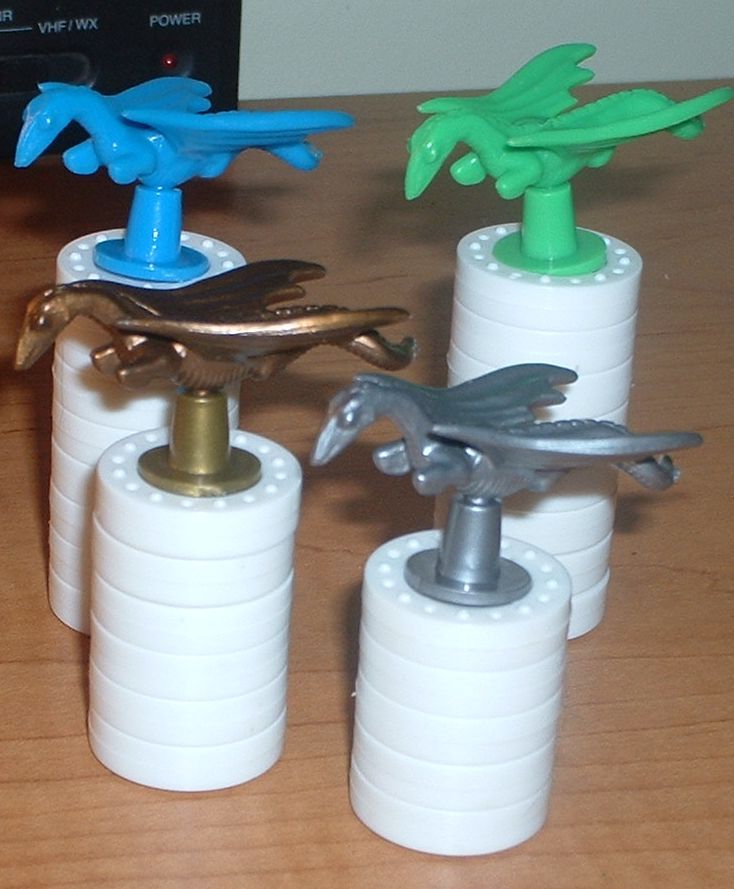
However, if a player rolls a 1 or 2 on their movement roll, they instead can draw a Magic Card. This is a really great balancing effect for putting a positive spin on a poor roll. Magic Cards are held in secret until used for another mysterious effect we’ll discuss later.
As dragons fly around the board, they are almost immediately going to start getting into each other’s space. And if dragons are known for one thing, it’s being great at sharing and compromising. When a dragon is adjacent to any dragon of another color, they can attempt to carefully persuade the other dragon to leave their personal space with some less-than-kind words. And by “less than kind” I mean “deadly”, and by “words”, I mean “claws”.
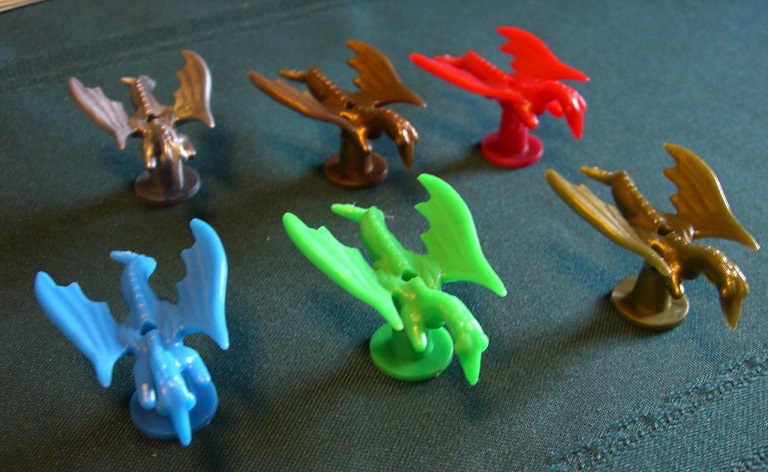
Combat in Dragonlance
Each dragon rolls a d10 and whichever dragon has the lower roll loses an amount of altitude equal to the difference in the results. If the dragon’s altitude reaches 0, they have crashed and are removed from the game. This creates a really interesting dynamic since you can effectively “heal” any dragon by just gaining more altitude, but that won’t move you closer toward victory. Do you “waste” movement points to heal up, or leave them to fall? It’s a really interesting mechanic.
Dragons can only enter the central island tower through their own color gate, which is situated on the opposite side of their starting area.
Once the dragon reaches altitude 10 while adjacent to the tower, they pick up the Dragonlance. Any dragon can attempt to steal the Dragonlance from The Lancer, but this must be announced prior to the attack. Success steals the lance but deals no damage. A failed steal attempt has no effect. If the Lancer crashes, the lance is returned to the tower.
The first dragon to return the Dragonlance to their starting area wins!
But wait… What about those Advanced Rules we mentioned earlier? Well, buckle in, because this is where things get wild. But there are a lot of advanced rules so let’s run through them real fast.
Advanced Rules Summary
- Each dragon type has a champion which provides that color a unique bonus.
- Movement is totally overhauled to have more realistic flight mechanics and be more tactical.
- Dragons now have facing and can make one 60-degree turn for each hex moved.
- Dragons gain bonuses to combat for attacking another dragon from behind or flanking on either side or from a greater altitude
- Dragon may climb no more than 2 levels for every hex of forward movement. Dragon may descend no more than 4 levels for every hex of forward movement.
- Dragons can discard a Magic card to perform an AERIAL STUNT!
There’s TEN different stunts you can pull off!
- Dragons can land on one of several floating citadels orbiting the tower to find a Magic Item.
- Instead of crashing at 0 altitude, dragons will crash on a forest hex at 2 altitude and will crash on mountain hexes at 4 altitude.
- Players can resurrect their dragons by spending Magic cards.
- In order to enter the tower island, dragons must descend to fly under the gate leading into the tower, which requires flying lower than 3 altitude. Then fly back up to reach the top of the tower at altitude 10. But with advanced movement rules, they’ll have to spiral up around the tower.
This isn’t the first game to split the rules into Basic and Advanced, but this might be the largest separation of the rulesets. The advanced rules make Dragonlance a completely different game. It turns from a simple roll-to-move game into a full-on aerial dogfighting arena combat simulator. Well… aerial dragon-fighting arena combat simulator. Plus the additional items and magic and champions make this a totally replayable experience.
I also really like the added options for the Magic cards. Giving them multiple uses and acting as something of a resource to be spent is a really great addition. More player choice is basically always a good inclusion.
Final Thoughts on the Dragonlance Board Game
The Dragonlance board game is so much better than I expected! Most Dungeons & Dragons-based board games are your typical dungeon crawlers. Not that there’s anything wrong with that, but this is such a departure from that. Still, having spent more time than I’d like to admit flying my own ships off the play area in Star Wars: X-Wing, I think I’ll leave the flight maneuvering to the experts.
But if you’re into games like X-Wing and looking for something with a little different flavor, see if you can dig up a copy of Dragonlance.

